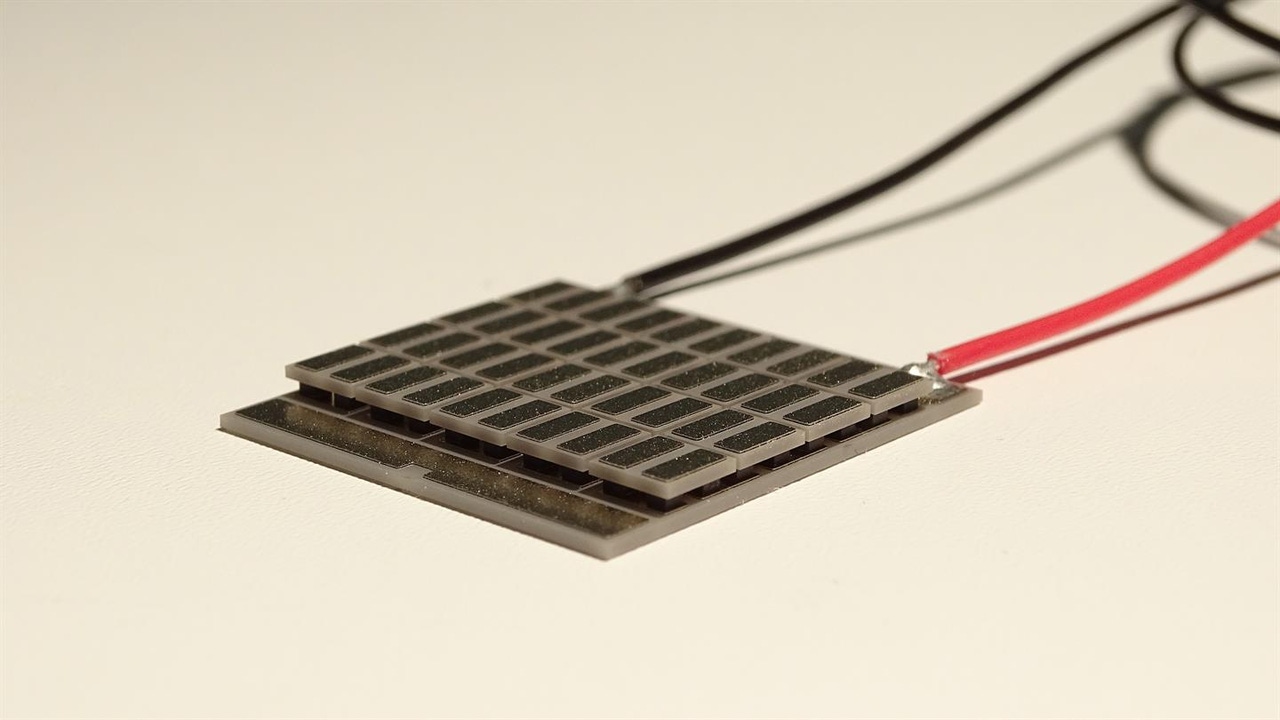Research Seeks to Turn Waste Engine Heat Into PowerResearch Seeks to Turn Waste Engine Heat Into Power
Researchers are studying how thermoelectric generators can use waste engine heat, convert it into electricity and then use the power in the vehicle for control units or electronics, reducing the load on the alternator.
March 14, 2017

LEICESTER, U.K. – The benefit of thermoelectric materials, which convert heat directly into electricity, is partly lost because of their low conversion yield, experts argue, and when thermoelectric generators try to capture waste engine heat to improve vehicles’ fuel economy the gain still is minimal.
But a group of researchers from German Aerospace Center (DLR) along with Japanese manufacturer Yamaha are trying to address the problem by developing thermoelectric materials with high efficiencies that could cut fuel consumption up to 5% for on-road and rail vehicles.
Reinhard Sottong, physicist and research associate at the center’s Institute of Materials Research, tells WardsAuto thermoelectric materials come in many forms, and the challenge is building thermoelectric modules out of these materials linked to metallic conductors that guide the electrical current.
“This contact is critical to the performance of the module,” he says. “For each thermoelectric material the process and materials used in these contacts have to be developed individually, since all materials have different mechanical, electrical, thermal and chemical properties.” In a car, these modules would be integrated in a heat-exchanger setup extracting heat from an exhaust system on one side and cooled by a coolant on the other side.
Some lab prototypes and small-scale production modules have evolved recently but these often are very expensive and sometimes not stable. A large-scale production that would “reduce the costs to prices interesting (to the) car industry (by) yielding big enough numbers of modules, is yet unheard,” Sottong says, “although everybody is researching eagerly to facilitate that. It won’t be long before we get there.”
The premise of the project announced in February is that combustion engines use only about one-third of the potential energy in the fuel for propulsion and the “remaining two-thirds are lost as waste heat,” researchers at the DLR’s vehicle-concept institute say. However, “thermoelectric generators use this heat and convert it into electricity.” The power then can be used in the vehicle for control units or electronics, reducing the load on the alternator, which otherwise would have to generate this power itself, the researchers say.
In hybrid and extended-range electric vehicles with internal-combustion engines, the power obtained from a thermoelectric generator can be fed directly to the battery, they say.
Yamaha is contributing its know-how in procuring and manufacturing thermoelectric modules made of semiconductor materials while the DLR helps with design, vehicle concepts and optimizing vehicle-energy systems in developing prototype thermoelectric-generator modules.
Thermoelectric-generator technology has been under development at Yamaha since 1998 and the system has come a long way since then, Yamaha spokesman Kenji Arakawa says.
“With us, DLR plans to develop a new generation of thermoelectric generator units for vehicles by utilizing Yamaha technology that makes power from waste heat,” Arakawa tells WardsAuto. “We also plan to provide know-how in the procurement and manufacture of the thermoelectric modules, which are made of semiconducting materials.”
The genesis of the technology is not the auto sector, but instead is semiconducting technology used to create optimal sound from musical equipment, including sound generators and graphic controllers, Arakawa says.
That technology now is being channeled into the auto sector, as well as being applied to generating power from factory exhaust heat. Yamaha’s thermoelectric generators have been engineered to efficiently generate power by making the most of the Seebeck effect – where a temperature difference between two dissimilar electrical conductors or semiconductors produces a voltage difference, and hence a current.
The equipment also has been miniaturized to occupy only a small space in a vehicle but still is able to generate significant amounts of electricity. “We plan to apply the technology not only to conventional gasoline engines, but also to diesel and hybrid vehicles,” Arakawa says.
The industry, however, is divided on thermoelectric generation’s potential uses. The fact the system captures only waste energy or energy differences between its components makes it limited, says Peter Haropp, chairman of U.K.-based market-intelligence company IDTechEx.
“I would say it is rather half-half in the West. BMW researched into it nearly 20 years ago,” he says, adding the technology may “not be one of the best options but one out of many out there.” Indeed, the low conversion yield of thermoelectric materials is a concern, agrees U.K.-based global engineering, strategic and environmental consultancy Ricardo.
“Most current thermoelectric materials are based on rare or toxic elements, which precludes their implementation at large scale,” the company says in a note published in February. “More sustainable materials have been extensively investigated over the years, but mostly at laboratory scale.”
That said, Ricardo argues, “When the heat is lost anyway, like in thermal engines or in energy-intensive industries, any benefit is good to take.”
Given the “auto industry is moving towards pure electricity or hybrid (propulsion systems), we will see more of this,” says David Bailey, an auto-manufacturing expert with the U.K.’s Aston University.
The DLR-Yamaha researchers do not discuss a timeline for completing the project but say they are “preparing the next steps” in August.
–with Julian Ryall in Tokyo
About the Author
You May Also Like